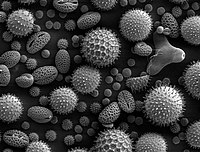
Photo from wikipedia
Raman microscopy is a well‐established tool for distinguishing different cell types in cell biological or cytopathological applications, since it can provide maps that show the specific distribution of biochemical components… Click to show full abstract
Raman microscopy is a well‐established tool for distinguishing different cell types in cell biological or cytopathological applications, since it can provide maps that show the specific distribution of biochemical components in the cell, with high lateral and spatial resolution. Currently, established data analysis approaches for differentiating cells of different types mostly rely on conventional chemometrics approaches, which tend to not systematically utilise the advantages provided by Raman microscopic data sets. To address this, we propose 2 approaches that explicitly exploit the large number of spectra as well as the morphological and textural information that are available in Raman microscopic data sets. Spatial bagging as our first approach is based on a statistical analysis of majority vote over classification results obtained from individual pixel spectra. Based on the Condorcet's Jury Theorem, this approach raises the accuracy of a relatively weak classifier for individual spectra to nearly perfect accuracy at the level of characterising whole cells. Our second approach extracts morphological and textural (morpho‐textural) features from Raman microscopic images to differentiate cell types. While using few wavenumbers of the Raman spectrum only, our results indicate on a quantitative basis that Raman microscopic images carry more morphological and textural information than haematoxylin and eosin (H&E) stained images as the current gold standard in cytopathology. Our 2 approaches promise improved protocols for the fast acquisition of Raman imaging data, for instance, for the morphological analysis of coherent anti‐Stokes Raman spectroscopy microscopic imaging data or for improving the accuracy of fibre optical probe systems by resampling spectra and utilising spatial bagging.
Journal Title: Journal of Chemometrics
Year Published: 2018
Link to full text (if available)
Share on Social Media: Sign Up to like & get
recommendations!